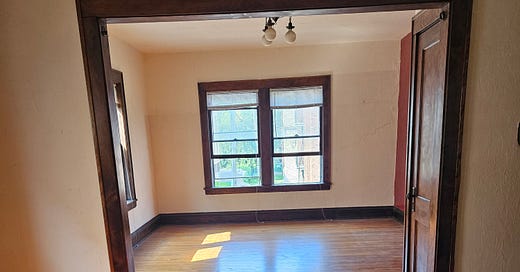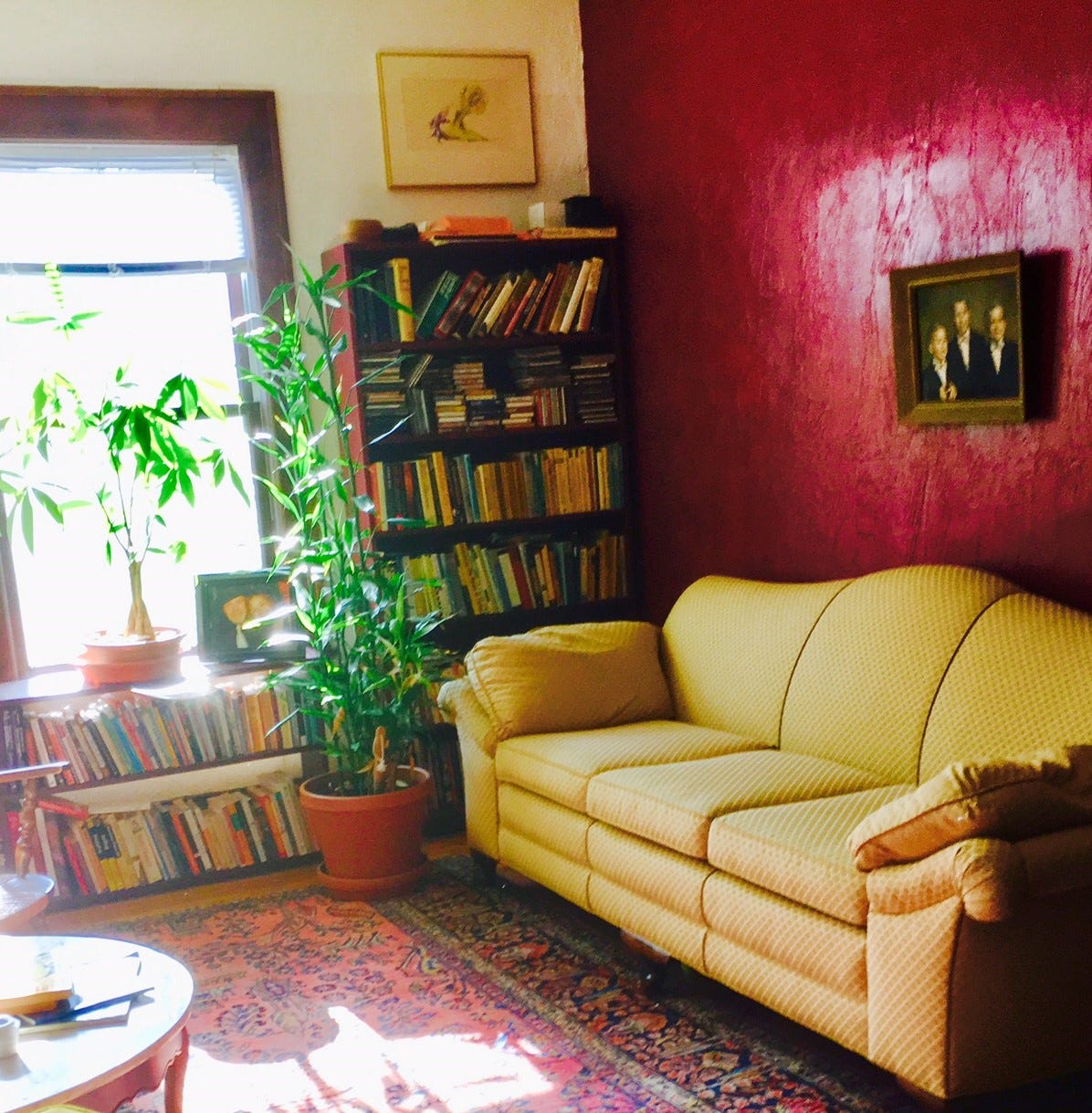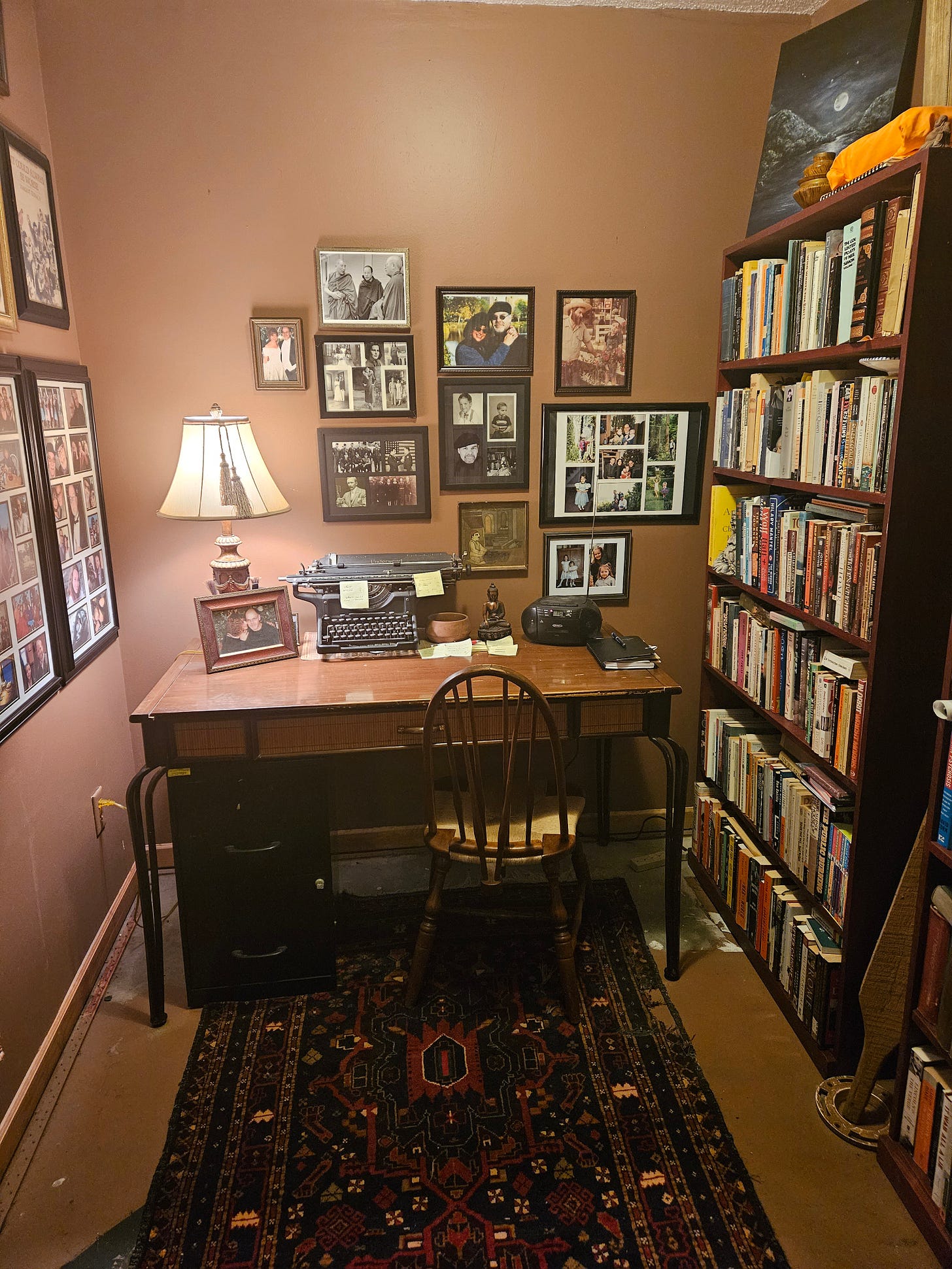Staying in the apartment forever made no sense. Eventually, we had to formalize what had become the reality: I lived with Sandy.
My stuff—meaning my furniture and the bulk of my books—were at the apartment, but my clothes, many of my other books, my meds, and all sorts of odds and ends were at Sandy’s. I had my own section of the closet there, a drawer in the bathroom, a bedside chest with four drawers, and two drawers in the main dresser. Everything I needed for what my life had evolved into was at Sandy’s place. Everything at the apartment—or almost everything there—represented a life I had little-by-little let go of. It was time to say goodbye to the apartment and most of my belongings.
When we finally sat down and discussed my actually moving in, I wondered what I could possibly do with the accumulation of stuff I owned but no longer needed. As my buddy Brad had said once, everything there had a story. My couch? I’d bought it for a song in grad school and driven over Cresson Mountain in a snow storm with it tied to my VW roof rack. The shoulder yoke hung on the wall was the one I hauled water on that winter in the cabin. The worn oriental carpet had been in my family before I’d been born. My brothers and I had wrestled on it. My father and I had wrestled on it. My son and I had wrestled on it. The rocking chair and the desk chair, both antiques and in my family as long as I could remember, couldn’t simply be discarded. My mother had nursed me in the rocker as an infant.
A long process of getting rid of “things” began. I started with simply grabbing a few items each time I visited the apartment and then giving or throwing them away. A beautiful old hand saw went to my woodworking buddy Mark, who was also my first reader of story drafts. That saw had been with me when I worked as a carpenter’s helper the year I lived in the cabin. Bud Houtz, the master carpenter I was assigned to, loved it and borrowed it every chance he got. Mark got most of my other tools, too. Goodwill got about a third of my books. I parted with them by category. Self-help went first. Cook books went next. I hadn’t opened one of either category in years. A few of the kid’s books, authors like Roald Dahl, survived the purge, but most went. I made almost daily trips to drop bagsful of books at Goodwill. The Geek Squad at Best Buy took care of a few stray, defunct devices.
As spring and summer progressed, the process of cleaning out the apartment picked up speed. Every day I’d bring a few bags of books to Sandy’s. My collection of book bags took up more and more space in the TV room until finally the bookcases at the apartment were empty. The kitchen was cleaned out. All that I took with me was my mother’s serving platter, which found a place in Sandy’s kitchen. The original art I’d bought over the years and lots of photographs came along with me, too. My Air Force field jacket, stained and ripped and just plain beat up, came also. And my dress blues pants—which I can still get into after 50 years!—that came, too. There are simply some things you don’t get rid of. The colorful vests I used to wear in my early days of storytelling went to Goodwill. That had been a silly phase. Good riddance.
The couch and carpets had no place at my new home, and it made no sense to put them in storage. My secret hope was that my son Chris would want them, as it turned out that he did. These were among my most valued possessions, so I was delighted. I’d already given him the Tibetan tanka that had been painted especially for me in thanks for helping my friend Yangkyi’s family when they came to this country. I arranged with a freight company to ship the carpets and the couch home to Pennsylvania.
Carrying bags of books and other items down the stairs and out to the car, then—day-after-day—climbing back up the stairs for more began to tell on me. Sandy kept reminding me that I have a case of heart failure. Even doing all this little-by-little could bring me to grief. Somehow, though, I slowed down and still got it done. Aside from the empty bookcases and desk, the place was bare. I hired a couple neighbors to do the heavy lifting and move me. One was a quirky but brilliant ex-student from my days teaching at the university, the other was a former boxer I’d long since befriended. Both have strong backs and big, big hearts, and both needed the $125 I offered. My buddy Mark offered the use of his van and came along to manage the move. As usual, he’d thought it all out on his own and bossed the rest of us around to get everything packed correctly into the van and then put in the right places at Sandy’s. A true friend in my need, he came for free.
The last step was to clean the place one last time. Sweep the corners. Dust the blinds. Wet mop the floors and shine them up. Give the tub, the sinks, the toilet a final going over. Check to see if I’d left anything. Sandy helped. We found a small wicker shelving unit under the kitchen counter. I’d rescued it maybe fifteen years before, discarded in the ally across the street, and brought it home. Spruced up, it served nicely to hold cleaning supplies. I don’t know how I’d missed it. I put it back in the ally where I’d found it.
An hour later, as Sandy and I walked to the car, leaving the Loring Park apartment for the absolute last time, we noticed a young guy coming out of the ally carrying the wicker shelving I’d just set out there.
“Hey,” I yelled. “I see you found my little shelf.”
He nodded, apparently not sure what my intensions were.
“I found that exactly where you did,” I yelled. “When you move, put it back in the ally for the next person. Enjoy.”
And I climbed into the car and we drove away to my new office and a new productive chapter in my writing life. Many of the stories posted on this Substack were written in this new place.





